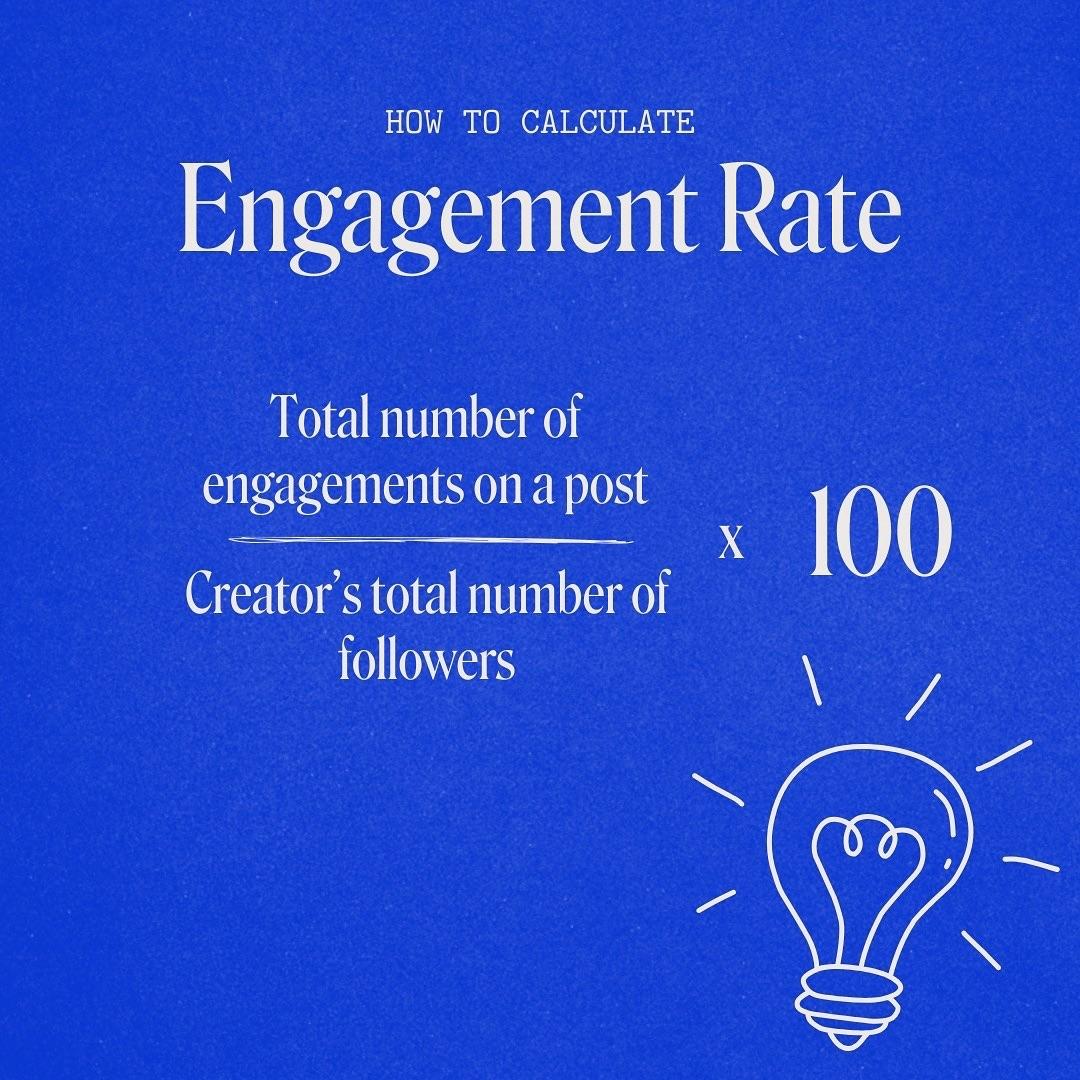
Unlocking Loyalty: 19 Post-Purchase Email Examples That Drive Repeat Sales
Hey there, savvy marketers! We all know that winning a customer’s heart doesn’t end at the checkout. In fact, it’s just the beginning of a beautiful relationship! That’s where post-purchase emails come into play. These nifty little messages are your secret weapon for not just thanking customers for their purchase, but also for keeping them coming back for more. Imagine turning that one-time buyer into a lifelong brand ambassador—sounds pretty great, right?
In this article, we’re diving into 19 powerful post-purchase email examples that have proven to be game-changers in driving repeat sales. We’ll explore everything from the art of crafting a heartfelt thank-you to smart strategies for upselling and cross-selling. Whether you’re a seasoned email marketer or just getting your feet wet, these examples are packed with insights that can help you build stronger connections with your customers and skyrocket your sales. So, grab a cup of coffee, and let’s get inspired to transform your email strategy!
Understanding the Power of Post-Purchase Emails
Post-purchase emails are more than just a thank-you note; they are a powerful marketing tool that can significantly boost customer loyalty and drive repeat sales. Once a customer has completed their transaction, this is the prime moment to nurture that relationship and transform one-time buyers into lifelong fans.
Firstly, these emails serve as a reminder of the customer’s recent purchase, reinforcing their decision and making them feel good about their choice. Here are some key elements to consider when crafting your post-purchase emails:
- Personalization: Address customers by their names and reference the products they purchased.
- Value Addition: Offer relevant product recommendations based on their purchase.
- Incentives: Include discount codes or special offers for future purchases to encourage repeat business.
- Feedback Requests: Encourage customers to leave a review or share their thoughts about the product.
In addition, timing is critical. Sending post-purchase emails within a few days after delivery can be particularly effective. This ensures that the customer has received their product and has had a chance to experience it firsthand. Here’s a simple table to illustrate the ideal timing for sending different types of post-purchase emails:
| Email Type | Ideal Sending Time |
|---|---|
| Order Confirmation | Immediately after purchase |
| Shipping Notification | When the order is shipped |
| Delivery Confirmation | Once the package is delivered |
| Follow-up Email | 3-5 days after delivery |
Moreover, storytelling can enhance the emotional connection between the brand and the customer. Sharing the story behind the product or offering insights into the company’s mission can deepen customer engagement. When customers feel connected to your brand on a personal level, they are more likely to return. Think about including:
- Behind-the-Scenes Content: Show how products are made or sourced.
- Customer Success Stories: Highlight testimonials from other satisfied customers.
Lastly, always include a clear call-to-action in your emails. Whether it’s to shop again, follow your social media channels, or join your loyalty program, make it easy for customers to take the next step. A well-crafted post-purchase email not only thanks the buyer but opens the door for future interactions, creating a cycle of trust and repeat business.
Crafting the Perfect Thank You Message
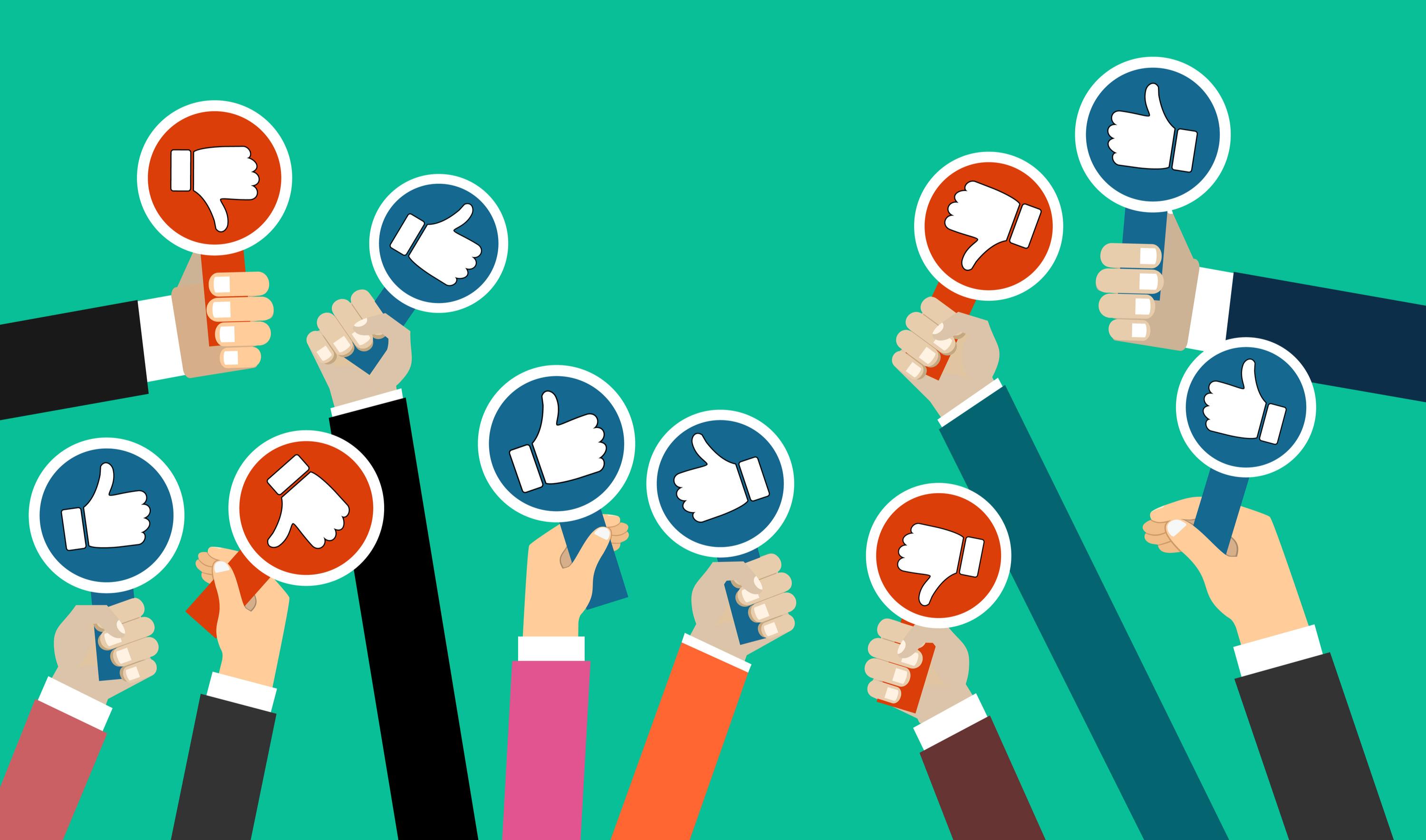
Encouraging Customer Feedback for Continuous Improvement
To thrive in today’s competitive market, acknowledging and acting on customer feedback is essential. Post-purchase emails are a golden opportunity to connect with your customers and gather valuable insights that can refine your offerings. By inviting customers to share their thoughts, you not only show that you value their opinions but also create an avenue for continuous growth.
Consider including a brief survey in your follow-up emails. This can be as simple as a few multiple-choice questions or a rating system. Here’s what to keep in mind:
- Keep it Short: Customers appreciate brevity. Aim for 3-5 questions to respect their time.
- Be Specific: Focus on areas like product quality, shipping experience, and customer service.
- Incentivize Feedback: Offering a small discount on their next purchase can encourage more responses.
Another approach is to highlight customer feedback in your email content. Showcase testimonials or reviews from recent purchasers. Not only does this build trust, but it also demonstrates that you listen and value your customers’ opinions. You can create a dedicated section in your post-purchase emails that features:
- Recent positive reviews
- Customer shout-outs
- Spotlight on a product improvement based on customer feedback
Moreover, consider creating a feedback loop. Let your customers know that their opinions are instrumental in shaping the future of your products and services. You might include a line in your email like, “Your feedback helps us serve you better!” This not only encourages responses but fosters a sense of community.
Here’s a simple table to illustrate the types of feedback you could be seeking:
| Feedback Type | Purpose | Example Questions |
|---|---|---|
| Product Quality | Improve product features | How satisfied are you with the product quality? |
| Customer Service | Enhance support experience | How would you rate your experience with our customer service? |
| Shipping Experience | Streamline delivery processes | Was your order delivered on time? |
ensure that you act on the feedback received. When customers see that their input leads to real change, they’re more likely to engage again. Share updates in your future emails about what you’ve done based on customer suggestions. This not only validates their feedback but cultivates loyalty and encourages repeat business.
Recommending Products Based on Purchase History
One of the most effective strategies for driving repeat sales is utilizing purchase history to recommend products to customers. This tailored approach not only enhances the customer experience but also significantly boosts your chances of conversion. Imagine receiving an email that not only acknowledges your last purchase but also suggests items that complement what you’ve already bought—it’s like having a personal shopper available at all times!
When crafting these post-purchase emails, consider these key elements:
- Personalization: Use the customer’s name and refer to their previous purchases. For example, “Since you loved the blue running shoes, you might also like these moisture-wicking socks!”
- Segmentation: Group your customers based on their buying habits. If someone frequently buys skincare products, they might appreciate suggestions for complementary items like moisturizers or sunscreens.
- Exclusive Offers: Include special discounts for recommended products. A little incentive can go a long way in encouraging a second purchase.
Here’s a simple table to illustrate how you can organize product recommendations based on customer preferences:
| Customer Purchase | Recommended Products | Discount Offered |
|---|---|---|
| Yoga Mat | Yoga Blocks, Water Bottle | 15% Off |
| Scented Candles | Diffusers, Candle Holders | 10% Off |
| Cookbook | Chef’s Knife, Apron | 20% Off |
Utilizing customer data not only helps in curating these recommendations but also in making the email feel more relevant. Incorporating past purchase data can lead to suggestions that seem intuitive rather than arbitrary. For example, if a customer purchased a DSLR camera, recommending a lens or camera bag makes perfect sense and can lead to a seamless buying experience.
To enhance engagement, include dynamic content in your emails. This means showcasing products that might have just come into stock or are trending, based on the customer’s previous interests. This strategy helps keep your brand at the forefront of their minds and encourages timely purchases.
Don’t forget about the power of reviews and social proof. Including ratings or testimonials from other customers who have bought the recommended products can significantly increase trust and drive sales. It reassures your customers that others have enjoyed the items they’re considering.
Lastly, always end with a clear call to action. Phrases like “Shop Now” or “Discover Your Next Favorite Item” can motivate customers to click through and explore the recommended products. The key is to make the process as easy and inviting as possible, turning a simple email into a powerful sales tool.

Creating Exclusive Offers for Repeat Buyers
One of the most effective ways to encourage repeat purchases is by creating exclusive offers specifically for your loyal customers. These offers not only make them feel valued but also incentivize them to return to your store. Here are some proven strategies to consider:
- Tiered Discounts: Reward your customers based on their purchase history. For instance, you can offer a 10% discount after their first purchase, 15% after the second, and so on. This gradual increase makes them feel appreciated for their loyalty.
- Members-Only Promotions: Create a VIP club where members receive special discounts, early access to sales, or first dibs on new products. This exclusivity creates a sense of belonging and urgency.
- Bundle Deals: Encourage repeat purchases by offering bundle deals that provide additional savings on complementary products. For example, if a customer bought a camera, offer a discounted lens or accessory with their next purchase.
- Loyalty Points: Implement a points system where customers earn points for every purchase they make. These points can be redeemed for discounts or free products, encouraging them to come back for more.
To make your offers even more enticing, consider adding a time limit or exclusive access for a limited number of customers. This creates urgency and encourages immediate action. For example:
| Exclusive Offer | Validity Period |
|---|---|
| 20% off on next purchase | Valid for 7 days |
| Free shipping on orders over $50 | Valid for 14 days |
| Buy one, get one 50% off | First 100 customers only |
Incorporating personalized messages into your offers can further enhance their effectiveness. Use customer names, reference their past purchases, or suggest items based on their preferences. This not only makes the email feel personal but also shows that you pay attention to their needs.
Lastly, don’t forget to test and analyze the performance of your exclusive offers. Use A/B testing to see which types of offers resonate best with your audience, and adjust your strategies accordingly. By continuously refining your approach, you can effectively drive repeat sales and cultivate a loyal customer base.
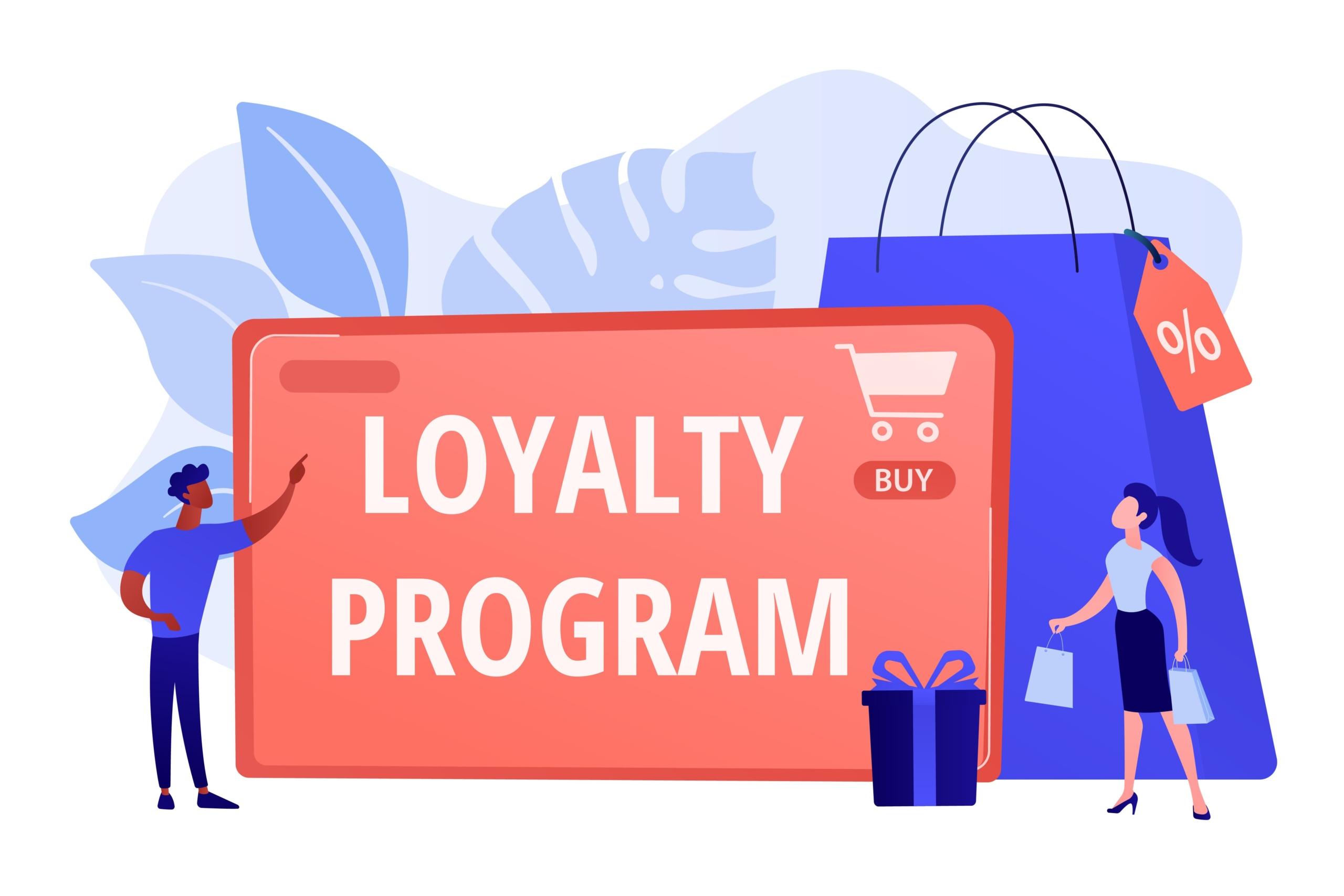
Leveraging Loyalty Programs to Boost Retention
When it comes to enhancing customer retention, loyalty programs are invaluable tools that not only reward repeat purchases but also foster a sense of community among your customers. By integrating these programs into your post-purchase email strategies, you can create a seamless journey that encourages customers to return, again and again.
Incentives Matter: A well-structured loyalty program offers tangible incentives that can motivate customers to complete additional purchases. Consider offering:
- Points for every dollar spent
- Exclusive discounts for members
- Early access to new products
- Birthday rewards and special promotions
Segmentation for Success: Tailoring your post-purchase emails based on customer behavior can significantly boost engagement. Use data analytics to segment your audience effectively. For example, you might categorize customers into:
- New customers who just made their first purchase
- Repeat buyers looking for loyalty rewards
- Infrequent shoppers who need a little nudge
This targeted approach ensures that each email resonates with its recipient, making it more likely they’ll revisit your site to redeem their rewards.
Highlighting Rewards: Your post-purchase emails should prominently feature the loyalty program details. Use striking visuals and clear calls to action to showcase how customers can benefit. A well-designed table could effectively summarize the rewards associated with different loyalty tiers:
| Loyalty Tier | Points Required | Benefits |
|---|---|---|
| Bronze | 0-499 | 5% off all purchases |
| Silver | 500-999 | 10% off + free shipping |
| Gold | 1000+ | 15% off + exclusive products |
Creating Urgency: Incorporate time-sensitive offers to create a sense of urgency in your emails. For instance, let customers know their points will expire if not used within a certain timeframe. This tactic not only prompts quicker action but also increases the likelihood of repeat purchases.
Feedback Loop: Encourage feedback on the loyalty program experience. When customers feel heard, they are more likely to remain loyal. Including a link to a short survey in your emails can help gather valuable insights. Use this feedback to continuously refine your loyalty offerings, keeping them fresh and appealing.
Personal Touch: personalize your communication. Mention the customer’s recent purchases or browsing behavior, and suggest complementary products they might love—especially those that could earn them more loyalty points. A personal touch can significantly enhance the customer experience and foster a deeper connection to your brand.

Highlighting Social Proof and Customer Success Stories
Incorporating social proof and customer success stories into your post-purchase emails can significantly enhance the impact of your communication. By showcasing real experiences from satisfied customers, you create a sense of trust and community that encourages repeat purchases. Here are some effective ways to highlight these elements:
- Customer Testimonials: Feature quotes or short stories from happy customers who have had positive experiences with your product. These snippets can be powerful endorsements that resonate with potential repeat buyers.
- Before-and-After Case Studies: Share transformations that your product has facilitated. For instance, images or narratives that detail how your product improved a customer’s life can be compelling.
- User-Generated Content: Encourage customers to share photos or videos of themselves using your product. Highlighting this content in your emails not only provides social proof but also creates a sense of community around your brand.
Consider creating a visually appealing layout that includes a dedicated section for these success stories. Using a simple table can help organize testimonials and make them easy to digest.
| Customer | Testimonial | Product |
|---|---|---|
| Jane D. | “This product changed my life! I can’t imagine my routine without it.” | Ultimate Skincare Set |
| Mark S. | “Reliable and effective. I trust this brand completely!” | Fitness Tracker |
| Linda A. | “Absolutely love it! Great quality and fast shipping.” | Eco-Friendly Tote Bag |
Moreover, embedding links to detailed case studies or success videos in your emails can drive engagement. When customers see how others have benefited, they are more likely to see the value in your products and feel compelled to make another purchase.
Lastly, consider incorporating a referral program within these emails. When customers share their success stories with friends or on social media, not only do they reinforce their loyalty, but they also generate new leads for your business. Offering incentives for referrals can further motivate them to spread the word about their positive experiences.

Timing Your Emails for Maximum Impact
When it comes to post-purchase emails, timing is everything. If you send your emails too soon or too late, you might miss the opportunity to engage your customers effectively. Finding that sweet spot can significantly enhance your chances of driving repeat sales.
Consider the following strategies for timing your emails:
- Immediate Follow-Up: Send a thank-you email within 24 hours after the purchase. This not only acknowledges their order but also sets a positive tone for future interactions.
- Post-Delivery Check-In: A few days after the product has been delivered, send an email asking for feedback. This is a great moment to encourage reviews and share how-to guides or tips related to their purchase.
- Customer Milestones: Celebrate anniversaries or milestones related to their purchase, such as a month or year since the order. Personalization can enhance their connection to your brand.
Analyzing customer behavior can also help refine your timing strategy. For example, if data shows that your customers are more likely to engage with emails on weekends, consider scheduling your campaigns accordingly. Here’s a quick look at the optimal timing based on customer behavior:
| Customer Segment | Best Day to Send | Best Time to Send |
|---|---|---|
| Young Adults | Saturday | 10 AM – 12 PM |
| Professionals | Tuesday | 1 PM – 3 PM |
| Parents | Thursday | 8 PM – 10 PM |
Another effective tactic is to create a sense of urgency. Send reminders about limited-time offers or new arrivals shortly after the purchase. This sparks curiosity and prompts customers to return to your store. However, be cautious not to overwhelm them; balance is key.
Lastly, don’t forget to test and analyze your email timing. Use A/B testing to experiment with different days and times to see what resonates best with your audience. Track open rates, click-through rates, and ultimately, conversion rates to fine-tune your approach.

Personalizing Your Communications for a Unique Touch
When it comes to post-purchase email communications, personalization is key. By tailoring your messages to the individual customer, you create a unique experience that not only enhances their satisfaction but also encourages repeat purchases. Here are some effective strategies to personalize your content:
- Use Customer Names: Always address your customers by their first names. A simple greeting like “Hi Sarah,” can make the email feel more personal and inviting.
- Reference Previous Purchases: Mention the products they bought. For instance, “We hope you’re enjoying your new sneakers! Here’s a special offer on our matching accessories.” This reinforces their choice and promotes related items.
- Segment Your Audience: Divide your customer base into segments based on their buying behavior. Tailor your messages accordingly. For example, frequent buyers might appreciate exclusive discounts, while first-time buyers could benefit from tips on how to use their recent purchase.
- Send Personalized Recommendations: Utilize data analytics to suggest products that align with their preferences. “Based on your interest in outdoor gear, we thought you’d love these hiking essentials!”
Taking it a step further, consider implementing dynamic content in your emails. This technique allows different customers to see different content based on their preferences or previous interactions. For example, you could include:
| Customer Segment | Dynamic Content Example |
|---|---|
| Fitness Enthusiasts | “Check out this new protein powder that pairs perfectly with your recent purchase of workout gear!” |
| Home Decor Lovers | “You might love these new wall art options to complement your last decor order!” |
Don’t underestimate the power of timing in your communications. Sending follow-up emails shortly after purchase can capitalize on the excitement of their new acquisition. For example, an email could arrive just days after delivery, asking for feedback and offering a discount on their next order. This not only keeps your brand fresh in their minds but also shows that you value their opinion.
consider utilizing customer feedback as a tool for personalization. Encourage reviews or feedback on their recent purchases, and follow up with tailored content based on their responses. If a customer gives a positive review, you might send an email thanking them and offering a loyalty discount. Conversely, if the feedback is less favorable, address their concerns directly in a follow-up. This shows that you are listening and are committed to improving their experience.
Remember, the goal is to make your customers feel valued and appreciated. When they receive emails that resonate personally, they are more likely to engage again, fostering loyalty and driving repeat sales. So, get creative with your communications and watch your customer relationships flourish!

Engaging Customers with Educational Content
One of the most effective ways to foster customer loyalty and encourage repeat purchases is by providing educational content that adds value to their experience. After a customer has made a purchase, they often have questions or are eager to learn more about their new product. By addressing their curiosity, you can keep the conversation going and strengthen their connection to your brand.
Consider sending a series of follow-up emails that include:
- How-to Guides: Break down the usage of your product with easy-to-follow instructions. This not only helps customers maximize their purchase but also positions your brand as a helpful resource.
- Tips and Tricks: Share creative ways to use your product that they might not have thought of. This encourages them to engage with the product more and increases their satisfaction.
- Care and Maintenance Information: Providing detailed care instructions can extend the life of the product, showing customers that you care about their investment.
Another great strategy is to include customer testimonials or case studies that highlight how others have successfully used the product. This social proof not only reassures your customers that they made a great choice but also inspires them to explore different ways to utilize the product.
Table of Content Ideas:
| Content Type | Description | Benefits |
|---|---|---|
| Video Tutorials | Engaging videos showcasing product features. | Visual learning enhances understanding. |
| Webinars | Live sessions for Q&A and deeper insights. | Interactive learning enhances engagement. |
| Blog Posts | In-depth articles related to product use. | SEO benefits and community building. |
Additionally, why not create a community around your brand? Encourage customers to share their experiences through social media. Feature user-generated content in your emails, and invite them to join forums or groups where they can connect with other customers. This not only drives engagement but helps customers feel like they are part of something bigger.
remember to keep the tone of your communications friendly and inviting. Personalize your emails with their names and refer back to their recent purchase. A simple touch like this can make them feel valued and appreciated, increasing the likelihood they’ll return for more.
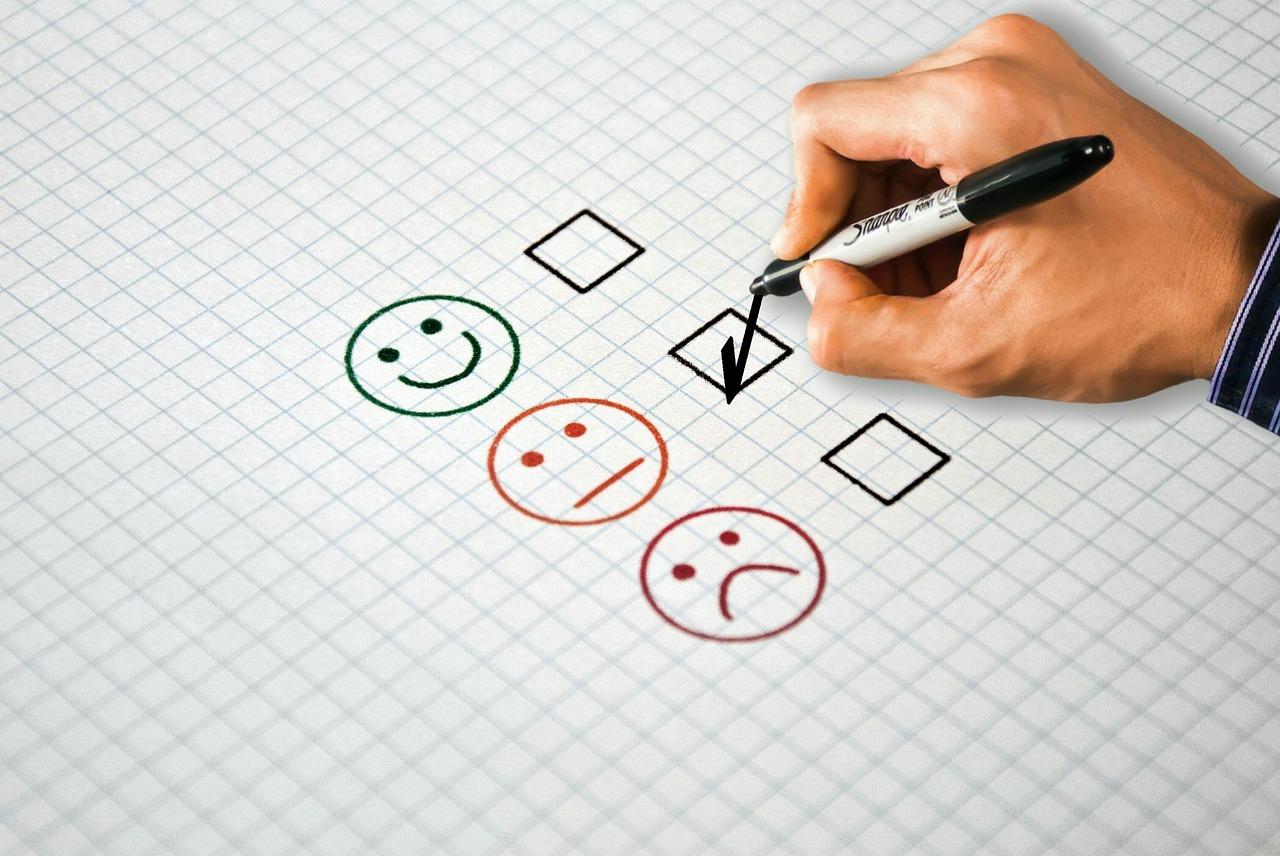
Inviting Customers to Share Their Experiences
We truly believe that our customers are the heartbeat of our business, and your insights matter immensely! We’d love to hear about your experiences and how our products have made a difference in your life. Sharing your journey can not only help us improve but can also provide valuable guidance to fellow customers.
Imagine connecting with others who share similar interests or challenges! By leaving a review or sharing your story, you can:
- Inspire fellow shoppers to make informed decisions.
- Boost community engagement by sharing tips and tricks.
- Shape our products by providing feedback directly to our team.
Your experiences can also help us spotlight customer favorites and identify areas for enhancement. Every review is a piece of the puzzle that helps us create a better shopping experience for everyone.
To make sharing your experience even easier, we’ve set up a simple review process. Just follow these steps:
- Visit our product page.
- Scroll down to the review section.
- Share your thoughts and rate your experience!
For those who prefer a more interactive approach, consider joining our online community where you can discuss products, share tips, and connect with other enthusiastic customers. Here’s what some of our community members are saying:
| Customer Name | Experience |
|---|---|
| Sarah J. | “This product changed my daily routine for the better!” |
| Mike T. | “Absolutely love it! I can’t imagine going back to my old ways.” |
| Lila R. | “The support team was incredibly helpful in resolving my issue.” |
As a token of our appreciation, everyone who shares their experience will be entered into a monthly draw for a chance to win exclusive discounts and prizes. It’s our way of saying thank you for being such a vital part of our community!
So, what are you waiting for? Your voice is important to us, and we can’t wait to hear your story!

Transforming One-Time Buyers into Loyal Advocates
Turning a one-time buyer into a loyal advocate is not just about the initial sale; it’s about creating a memorable experience that resonates long after the package is delivered. A well-crafted post-purchase email can be the key to keeping your brand top of mind and encouraging repeat business. Here are some game-changing strategies to consider:
- Personalized Follow-Ups: Tailor your emails based on the customer’s purchase. A simple acknowledgment of their choice enhances the connection and shows you care.
- Product Usage Tips: Provide valuable content that helps customers get the most out of their purchase. This not only increases satisfaction but also positions your brand as an authority in your niche.
- Incentives for Reviews: Encourage customers to share their thoughts. Consider offering a discount on their next purchase or entry into a giveaway as a thank-you for their feedback.
- Exclusive Access: Create a sense of belonging by offering previous customers exclusive access to new products or promotions. This helps them feel valued and special.
- Engagement through Storytelling: Share stories about how your products are made or showcase customer success stories. This builds a community around your brand and strengthens emotional ties.
Utilizing these strategies allows you to tap into the emotional connection customers have with your products. People love to feel part of a story, and by including them in your narrative, you nurture their loyalty.
| Strategy | Benefit |
|---|---|
| Personalized Follow-Ups | Enhances connection and customer satisfaction |
| Product Usage Tips | Increases product value perception |
| Incentives for Reviews | Boosts engagement and social proof |
| Exclusive Access | Creates a sense of community and value |
| Storytelling | Fosters emotional connections and loyalty |
By implementing these post-purchase email tactics, you not only increase the likelihood of repeat purchases but also cultivate a community of advocates who genuinely believe in your brand. Remember, the follow-up is just as important as the sale itself. It’s the bridge that leads to deeper relationships and greater lifetime value.
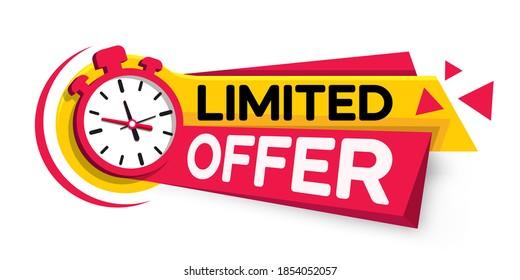
Driving Urgency with Limited-Time Promotions
Creating a sense of urgency can be a game-changer in your post-purchase communication strategy. When customers feel that time is running out on a promotion, they are more likely to take action. Here are some creative ways to leverage limited-time promotions in your post-purchase emails:
- Countdown Timers: Incorporate dynamic countdown timers in your emails. Showing a real-time countdown can visually express urgency and make the offer feel more immediate.
- Exclusive Offers: Frame your promotions as exclusive deals just for past customers. Phrases like “You’re one of our VIPs, and this offer is just for you!” can make your audience feel special and more inclined to act quickly.
- Flash Sales: Announce flash sales that last only a few hours or a day. This not only drives urgency but also encourages quick decision-making, as customers will fear missing out on a great deal.
- Limited Stock Notifications: If you have a product that’s low in stock, let customers know. Phrases like “Only 5 items left!” can prompt immediate purchases.
When crafting your email, keep your messaging concise but impactful. Use bold text to highlight the key points, such as the discount percentage or the urgency of the time frame. Here’s a simple template you might follow:
| Subject Line | Offer Details | Call to Action |
|---|---|---|
| Last Chance for 20% Off! | Only for the next 24 hours! | Shop Now |
| Exclusive 48-Hour Deal! | Get FREE shipping on your next order! | Claim Your Free Shipping |
Don’t forget to reinforce the urgency with a clear expiration date. For instance, include reminders like “Offer ends Sunday at midnight” in your email copy. This tactic not only informs but also keeps the urgency alive in your customers’ minds.
Moreover, consider integrating social proof into your limited-time promotions. Share testimonials or reviews from customers who have taken advantage of similar deals in the past. Highlighting their satisfaction can build trust and encourage others to jump on board.
remember to segment your audience for maximum effectiveness. Tailor your messages based on previous purchases or engagement levels. A personalized approach can make your customers feel valued and more likely to take advantage of your limited-time offers.

Analyzing Email Performance to Refine Your Strategy
When it comes to boosting repeat sales through post-purchase emails, understanding how these emails perform is crucial. Analyzing the data behind your email campaigns helps you fine-tune your approach and maximize effectiveness. Here are some key metrics to keep an eye on:
- Open Rates: This indicates how many people opened your email. A low open rate could signify that your subject lines need to be more compelling or that you’re targeting the wrong audience.
- Click-Through Rates (CTR): This measures the percentage of readers who clicked on a link within your email. A low CTR might suggest that your content isn’t engaging enough or that your call-to-action isn’t clear.
- Conversion Rates: Ultimately, this measures how many recipients took the desired action, such as making another purchase. If this number is low, it’s time to reevaluate your email’s offers and messaging.
- Unsubscribe Rates: This helps you understand if customers are finding your emails relevant. A spike in unsubscribes may indicate that you’re sending too many emails or that they’re not adding value.
Next, consider segmenting your audience based on their previous interactions. This can help you tailor your emails more effectively. For instance:
| Segment | Email Focus |
|---|---|
| First-Time Buyers | Welcome series with tips on using the product |
| Repeat Customers | Exclusive offers for loyal customers |
| Infrequent Buyers | Reminders for restocking or seasonal sales |
This approach allows you to send personalized messages that resonate more with your recipients. For instance, a first-time buyer may appreciate a follow-up email that offers tips on how to get the most out of their purchase, while a repeat customer might respond better to exclusive discount offers.
Another crucial aspect is A/B testing. Experiment with different elements of your emails, such as:
- Subject Lines: Test variations to see which ones capture attention better.
- Email Content: Try different formats, like video versus text, to gauge engagement levels.
- Call-to-Action Buttons: Experiment with wording and placement to see which drives more clicks.
don’t overlook the importance of timing. Analyze when your emails tend to perform best, and aim to send your messages during optimal windows. This can significantly impact open and click rates. For instance, sending follow-up emails soon after a purchase can remind customers of their positive experience and encourage them to shop again.
By diving deep into email performance metrics and understanding your audience’s behavior, you can create a refined email strategy that not only drives repeat sales but also fosters lasting customer relationships.
Frequently Asked Questions (FAQ)
Q: What are post-purchase emails, and why are they important for driving repeat sales?
A: Great question! Post-purchase emails are messages sent to customers after they make a purchase. They play a crucial role in nurturing the customer relationship by thanking them, providing valuable information, and encouraging future purchases. By keeping your brand top-of-mind and making customers feel valued, these emails can significantly boost repeat sales.
Q: What types of post-purchase emails should businesses consider sending?
A: There are several effective types of post-purchase emails you can send! Here are a few examples:
- Thank You Emails: A simple thank you can go a long way. Show appreciation for their purchase!
- Order Confirmation: Keep customers informed with details about their order status.
- Shipping Notifications: Let them know when their order is on the way!
- Product Recommendations: Suggest complementary products based on their purchase.
- Feedback Requests: Ask for reviews or feedback to show that you value their opinion.
- Re-Engagement Emails: Send reminders or special offers to encourage another purchase.
Q: Can you share a couple of examples of effective post-purchase emails?
A: Absolutely! Here are two examples that stand out:
- The Personal Touch: A cozy home goods store sends a thank you email with a personalized note that mentions the specific items purchased. They also include care tips for those items, making the customer feel special and engaged.
- Exclusive Offers: A beauty brand follows up with a post-purchase email that includes a discount code for the customer’s next purchase. They highlight products that pair well with the items bought, which not only entices the customer to return but also increases the average order value.
Q: How can businesses ensure their post-purchase emails are effective?
A: To make your post-purchase emails truly effective, consider these tips:
- Personalization: Use the customer’s name and purchase details to make the email feel tailored to them.
- Timing: Send emails at strategic times, like right after the purchase, when the product is delivered, or a few weeks later for re-engagement.
- Clear Call-to-Action: Whether it’s to leave a review, explore product recommendations, or take advantage of a discount, make sure your call-to-action is clear and compelling.
- Visual Appeal: Use eye-catching designs and images to make your emails visually appealing and engaging.
Q: How often should businesses send post-purchase emails?
A: It really depends on your brand and the customer experience you want to create. However, a good rule of thumb is to send a series of emails spaced out over a few weeks. For example, a thank-you email right after the purchase, a shipping notification, a follow-up for feedback, and then a special offer a couple of weeks later. This keeps the conversation going without overwhelming the customer.
Q: What are some common mistakes to avoid in post-purchase emails?
A: There are a few pitfalls to watch out for:
- Being Too Salesy: While you want to encourage repeat purchases, focusing solely on sales can feel pushy. Balance sales pitches with valuable content.
- Ignoring Customer Feedback: If a customer takes the time to leave feedback, make sure you acknowledge it! Ignoring this can disengage them.
- Neglecting Mobile Optimization: Many people check emails on their phones, so ensure your emails look great on all devices.
Q: Any closing thoughts on the importance of post-purchase emails?
A: Absolutely! Post-purchase emails are an invaluable tool for building loyalty and driving repeat sales. When done right, they can turn one-time buyers into lifelong customers. So, take the time to craft thoughtful, engaging emails that create a lasting impression. Happy emailing!
Final Thoughts
And there you have it—19 compelling post-purchase email examples that can transform one-time buyers into loyal customers. By leveraging these strategies, you’re not just sending emails; you’re building relationships, enhancing customer experience, and ultimately driving repeat sales.
Remember, the key to successful post-purchase communication lies in personalization and value. Whether it’s a simple thank-you note, a tailored product recommendation, or a special offer just for them, every interaction counts.
So, why not take a moment to revisit your email strategy? Implement a few of these examples, monitor the results, and watch your repeat customer rates soar. After all, a happy customer is not just a one-time sale; they are your best form of advertising.
Ready to get started? Dive into those inboxes and let your emails do the talking! Your next loyal customer is just an email away. Happy emailing!



